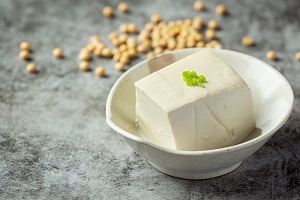We’re nearing the end of our fun alphabetical food series, and today we’re diving into foods that start with the letter Y! While it might seem like a tricky letter, you’ll be amazed by the wide range of delicious foods beginning with Y. From everyday ingredients like Yogurt and Yams to unique international dishes such as Yiros and exotic fruits like Yuzu, this list has something for every curious foodie. Whether you’re exploring global cuisines, expanding your ingredient knowledge, or simply love discovering new foods, here are 100 tasty and exciting foods that start with Y—including snacks, fruits, vegetables, meats, desserts, and more.
1. Yabbies grilled

Yabbies grilled are a tasty seafood dish made using small freshwater crustaceans called yabbies, which are similar to crayfish. Yabbies are mostly found in Australia, especially in rivers and farm dams. When grilled, their meat becomes tender and slightly sweet, with a smoky flavor that seafood lovers really enjoy.
People usually grill yabbies with simple seasonings like garlic butter, lemon, or herbs to bring out their natural flavor. They’re often served at outdoor barbecues or family gatherings in Australia. Many enjoy eating them with dipping sauces or on top of salads. Because yabbies are not very common in other parts of the world, grilled yabbies feel like a special treat and a taste of Australian culture.
2. Yabby (Australian crustacean)

The Yabby is a small freshwater crustacean found in Australia, especially in rivers, lakes, and farm dams. It looks like a tiny lobster, with a hard shell, claws, and a long tail. Yabbies are usually brown, blue, or green, and they live in muddy water. They are related to other crustaceans like crayfish and lobsters, and are popular in both Aboriginal and Australian cuisine.
People enjoy eating yabbies because they have soft, sweet meat inside their shell, mostly in the tail and claws. Yabbies can be boiled, grilled, or even used in seafood pasta or soups. They’re often cooked with garlic butter, herbs, or lemon to bring out their flavor. For many Australians, catching and eating yabbies is not just about the taste—it’s a fun and traditional part of rural life, especially during warm summer months.
3. Yak cheese

Yak cheese is a special type of cheese made from the milk of yaks—strong, long-haired animals that live high in the mountains of places like Tibet, Nepal, and parts of India. It’s often made by local farmers who use traditional methods passed down through generations. Yak milk is rich and creamy, which gives the cheese a strong, nutty flavor. Some types are soft and fresh, while others are hard and aged for a long time.
People enjoy yak cheese in different ways. In Nepal, it’s sometimes dried into a hard snack called Chhurpi, which can be chewed for hours. In Tibet, it’s used in cooking or eaten plain. Yak cheese is also popular among people who are lactose intolerant because yak milk has less lactose than cow’s milk. With its deep flavor and natural origins, yak cheese is loved by those who enjoy traditional foods and want to try something truly different from the mountains.
4. Yak milk

5. Yakhni (Indian broth)

6. Yakisoba

Yakisoba is a popular Japanese stir-fried noodle dish. It’s made with wheat noodles, sliced meat (like pork or chicken), and vegetables such as cabbage, carrots, and onions. Everything is cooked together in a hot pan and flavored with a sweet and savory yakisoba sauce, which is similar to Worcestershire sauce. Sometimes, it’s topped with pickled ginger, seaweed flakes (aonori), or mayonnaise.
Yakisoba is often served at Japanese festivals and street food stalls. It’s warm, flavorful, and comforting—making it a favorite for both kids and adults. Whether eaten as a quick lunch or a fun festival snack, yakisoba brings people together with its tasty mix of noodles, sauce, and fresh toppings.
7. Yakitori

Yakitori is a popular Japanese food made from small pieces of chicken grilled on skewers. The word “yakitori” means “grilled bird” in Japanese. It’s usually cooked over a charcoal fire and seasoned with either salt or a sweet soy-based sauce called tare. You might find parts like chicken breast, thighs, wings, or even liver used in yakitori.
People in Japan often enjoy yakitori at street stalls, casual bars called izakayas, or during festivals. It’s easy to eat, full of flavor, and often served hot right off the grill. Whether you’re trying Japanese street food, skewered meat, or just something new, yakitori is loved for its smoky taste, juicy texture, and simple, comforting style.
8. Yakitori donburi (Japanese rice bowl)

9. Yalta onion

10. Yam

Yam is a starchy root vegetable that grows underground. It looks a bit like a potato but has rough, brown skin and white, yellow, or purple flesh inside. Yams are different from sweet potatoes, even though people sometimes mix them up. They are mostly grown in Africa, Asia, the Caribbean, and parts of South America.
People cook yams in many ways—boiled, baked, mashed, or fried. In West Africa, yams are often used to make pounded yam, a popular dish served with soups and stews. In the Caribbean, yams are part of many comfort meals. They are loved for their rich, hearty taste and how filling they are. Yams are also packed with nutrients like fiber, potassium, and vitamins, making them a healthy choice for families around the world.
11. Yam bean

12. Yam chips

13. Yam fries

14. Yam porridge

15. Yam smoothie

16. Yamarita (fried yam)

17. Yamarita kebab

18. Yams au gratin

19. Yams roasted

20. Yams with marshmallows
21. Yangmei (Chinese barberry)

Yangmei, also known as Chinese bayberry, is a small, round fruit that comes from China. It has a dark red or purple color and a bumpy skin. The inside is juicy and sweet with a little sour taste, and it has a small seed in the center. People often eat it fresh, but it’s also used to make juice, jam, dried snacks, and even wine.
Yangmei grows mainly in southern China, especially in provinces like Zhejiang, Fujian, and Guangdong. It’s popular not just because of its refreshing flavor, but also because it’s full of vitamin C, antioxidants, and fiber. In the hot summer months, many people enjoy Yangmei as a cooling treat. It’s a fruit that brings back childhood memories for many in China, often picked fresh from trees and shared with family.
22. Yankee pot roast

23. Yaprak sarma (stuffed grape leaves)

24. Yarg cheese (Cornish cheese wrapped in nettles)

25. Yasai itame (Japanese stir-fry vegetables)

Yasai Itame is a popular Japanese dish made with stir-fried vegetables. The name means “stir-fried vegetables” in Japanese. It usually includes cabbage, carrots, bean sprouts, onions, and sometimes green peppers or mushrooms. These vegetables are quickly cooked in a hot pan with a little oil, soy sauce, and sometimes garlic or ginger. Some people also add sliced pork or tofu to make it more filling.
This dish is common in Japanese homes and restaurants because it’s quick, healthy, and full of flavor. Yasai Itame is often served with a bowl of rice and miso soup. People like it because it’s light, tasty, and a great way to enjoy fresh vegetables. It’s also a good choice for anyone looking for a simple vegetarian or low-fat meal. Related terms include Japanese cuisine, soy sauce, tofu, pork belly, and miso soup.
26. Yassa (African onion and lemon chicken)

27. Yassa fish

28. Yautia (a root vegetable)

Yasai Itame is a simple and tasty Japanese stir-fry made with mixed vegetables. The name means “fried vegetables” in Japanese. It usually includes cabbage, carrots, bean sprouts, onions, and sometimes meat like pork or chicken. All the ingredients are cooked quickly in a hot pan with soy sauce, garlic, and a little oil. It’s a popular homemade dish in Japan because it’s easy to make, healthy, and full of flavor. People enjoy it as a main meal or a side dish with rice and miso soup.
Yautia, also known as malanga or taro root, is a starchy root vegetable that grows in the Caribbean, Central America, and parts of South America. It has brown skin and white or purple flesh, depending on the variety. Yautia is often boiled, mashed, or fried and used in soups, stews, and traditional dishes like sancocho or pasteles. It has a mild, nutty taste and is loved for its soft texture and nutritional value. It’s a comforting food in many Latin households, especially for those who grew up eating it with family meals.
29. Yeast

30. Yeast doughnuts

31. Yeast extract

32. Yeasted cornbread

33. Yeasted waffles

34. Yellow apple

35. Yellow beans

36. Yellow beet salad

37. Yellow bell pepper

38. Yellow cake

39. Yellow cherry tomatoes

40. Yellow corn

41. Yellow curry

42. Yellow dal

43. Yellow dragon fruit

44. Yellow cheese

45. Yellow peppers

46. Yellow plantains

47. Yellow plum

48. Yellow rice

49. Yellow squash

50. Yellowfin tuna

51. Yellowtail

52. Yellowtail sashimi

53. Yellowtail sushi

54. Yema (Filipino custard candy)

Yema is a sweet and creamy candy from the Philippines. It’s made from simple ingredients like condensed milk, egg yolks, and sugar. The mixture is cooked until thick, then shaped into small balls or triangles and wrapped in colorful cellophane. Some versions also include crushed peanuts or a soft caramel coating for extra flavor.
People in the Philippines enjoy Yema as a snack or dessert, especially during holidays and family gatherings. It’s loved for its rich, milky taste and smooth texture. Yema is often homemade, passed down through generations, and sold in local pasalubong shops (souvenir stores). For many, it brings back happy childhood memories, making it more than just a candy—it’s a little piece of home.
55. Yemeni bread

56. Yerba buena (herbal tea)

57. Yerba mate

58. Yiros (another name for gyros)

59. Yiros sandwich

60. Yodel cake

61. Yodels (cream-filled cakes)

62. Yoghurt (alternative spelling)

63. Yoghurt smoothie

64. Yogurt

65. Yogurt cheese

66. Yogurt dressing

67. Yogurt parfait

68. Yogurt-covered raisins

69. Yogurt-marinated chicken

70. Yokan (Japanese jelly dessert)

71. Yolk

72. Yorkshire grits
73. Yorkshire pudding

74. Yorkshire tea

75. Yorkshire terrier tea (just a playful reference, not real tea!)

76. Yosenabe (Japanese hot pot)

77. Young coconut

78. Young jackfruit

79. Young turkey

80. Youngberry

81. Yourt (another transliteration of yogurt)

82. Youtiao (Chinese fried dough)

83. Yu choy (a Chinese green vegetable)

84. Yuca con mojo

85. Yucca

86. Yucca fries

87. Yucca root boiled

88. Yucca stew

89. Yule log

90. Yule log cake

91. Yum Yum sauce

92. Yunnan ham

93. Yunnan noodles

94. Yusheng (Chinese raw fish salad)

95. Yushoi (Japanese snack peas)

96. Yuzu

97. Yuzu cocktail

98. Yuzu kosho (Japanese condiment)
99. Yuzu marmalade

100. Yuzu tea


Jean Smith is a fitness enthusiast and blogger who focuses on fitness and a healthy lifestyle. She is passionate about assisting people in living healthier lifestyles and is constantly on the lookout for new and creative methods to stay fit and healthy. Her articles are excellent resources for anyone interested in improving their health and fitness.
